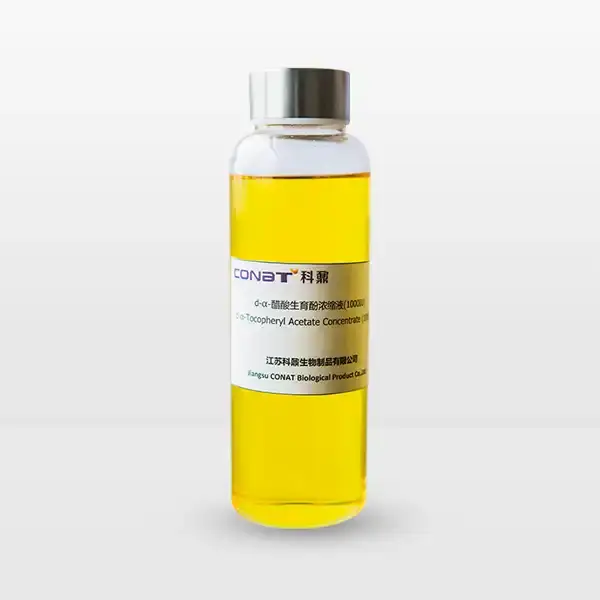- English
- French
- German
- Portuguese
- Spanish
- Russian
- Japanese
- Korean
- Arabic
- Greek
- German
- Turkish
- Italian
- Danish
- Romanian
- Indonesian
- Czech
- Afrikaans
- Swedish
- Polish
- Basque
- Catalan
- Esperanto
- Hindi
- Lao
- Albanian
- Amharic
- Armenian
- Azerbaijani
- Belarusian
- Bengali
- Bosnian
- Bulgarian
- Cebuano
- Chichewa
- Corsican
- Croatian
- Dutch
- Estonian
- Filipino
- Finnish
- Frisian
- Galician
- Georgian
- Gujarati
- Haitian
- Hausa
- Hawaiian
- Hebrew
- Hmong
- Hungarian
- Icelandic
- Igbo
- Javanese
- Kannada
- Kazakh
- Khmer
- Kurdish
- Kyrgyz
- Latin
- Latvian
- Lithuanian
- Luxembou..
- Macedonian
- Malagasy
- Malay
- Malayalam
- Maltese
- Maori
- Marathi
- Mongolian
- Burmese
- Nepali
- Norwegian
- Pashto
- Persian
- Punjabi
- Serbian
- Sesotho
- Sinhala
- Slovak
- Slovenian
- Somali
- Samoan
- Scots Gaelic
- Shona
- Sindhi
- Sundanese
- Swahili
- Tajik
- Tamil
- Telugu
- Thai
- Ukrainian
- Urdu
- Uzbek
- Vietnamese
- Welsh
- Xhosa
- Yiddish
- Yoruba
- Zulu
Is D-alpha-Tocopheryl Acetate Natural or Synthetic?
D-alpha-tocopheryl acetate is a complex and intriguing compound that has captured the attention of researchers, nutritionists, and medical professionals across various disciplines. This remarkable substance represents a sophisticated intersection between natural vitamin E and advanced chemical engineering, offering a unique perspective on how scientific innovation can enhance and modify naturally occurring molecules. By exploring its origins, production methods, and wide-ranging applications, we can gain a deeper understanding of this extraordinary compound and its significant role in modern science and technology.
What is the Origin of D-alpha-Tocopheryl Acetate in Natural and Synthetic Contexts?
The Molecular Structure of D-alpha-Tocopheryl Acetate
D-alpha-tocopheryl acetate is a chemically modified version of vitamin E that exemplifies the intricate relationship between natural compounds and synthetic transformations. The molecular structure reveals a fascinating chemical process where the original d-alpha-tocopherol undergoes acetylation, a chemical modification that introduces an acetate group to the parent molecule. This seemingly subtle change dramatically impacts the compound's stability, bioavailability, and functional characteristics. The acetate modification creates a more robust molecular structure that can withstand various environmental conditions while maintaining the core nutritional benefits of vitamin E.
The stereochemistry of d-alpha-tocopheryl acetate is particularly noteworthy. The "d" prefix indicates its specific molecular orientation, representing the naturally occurring form of the vitamin E molecule. This stereochemical specificity ensures that the compound retains its biological recognition and functional properties, distinguishing it from racemic or synthetic alternatives that might lack the same precise molecular configuration.
Historical Development of Tocopherol Derivatives
The evolution of tocopherol derivatives represents a remarkable journey of scientific discovery and innovation. In the early decades of the 20th century, researchers began to recognize vitamin E's critical role in human health, setting the stage for more advanced investigations into its molecular properties. The development of d-alpha-tocopheryl acetate emerged from a fundamental desire to overcome the inherent limitations of natural tocopherol, such as its susceptibility to oxidation and relatively short shelf life.
Pioneering scientists discovered that by introducing an acetate group, they could significantly enhance the molecule's stability without compromising its fundamental nutritional characteristics. This breakthrough opened new possibilities in pharmaceutical formulations, nutritional supplements, and various industrial applications. The ability to create a more stable vitamin E derivative represented a significant advancement in nutritional science, allowing for more consistent and effective product development.
Scientific Classification and Molecular Characteristics
From a scientific perspective, d-alpha-tocopheryl acetate occupies a unique position in the realm of molecular classification. While its base molecule originates from natural sources, the acetate modification represents a deliberate human intervention. This nuanced classification highlights the compound's hybrid nature – simultaneously natural and synthetic. Researchers have extensively mapped its molecular characteristics, demonstrating how precise chemical modifications can dramatically enhance a compound's functional properties.
Advanced spectroscopic techniques have allowed scientists to explore the intricate details of d-alpha-tocopheryl acetate's molecular structure. Nuclear magnetic resonance (NMR) spectroscopy and mass spectrometry have provided unprecedented insights into its chemical behavior, revealing the subtle interactions between its natural and synthetic components. These investigations have not only deepened our understanding of the compound but have also opened new avenues for potential applications in medicine, nutrition, and biotechnology.

How is D-alpha-Tocopheryl Acetate Produced and Extracted?
Industrial Production Methodologies
The industrial production of d-alpha-tocopheryl acetate represents a sophisticated blend of chemical engineering and natural resource management. Manufacturers begin with carefully selected natural sources of tocopherol, predominantly derived from vegetable oils rich in vitamin E. Soybean, sunflower, and wheat germ oils serve as primary raw materials, each offering unique compositional characteristics that influence the final product's quality.
The esterification process involves precise chemical reactions that transform tocopherol into its acetate form. This requires meticulously controlled temperature, pressure, and catalyst conditions to ensure optimal molecular conversion. Modern industrial facilities employ advanced reactor systems that allow for continuous monitoring and adjustment, guaranteeing consistent product quality and minimal molecular degradation.
Extraction Techniques from Natural Sources
Contemporary extraction methodologies represent the pinnacle of technological innovation in separating and isolating vitamin E compounds. Molecular distillation stands out as a particularly advanced technique, enabling the separation of tocopherol with extraordinary precision. This method leverages differences in molecular volatility, allowing for the extraction of pure vitamin E fractions with minimal thermal degradation.
Supercritical fluid extraction has emerged as another cutting-edge approach, utilizing carbon dioxide under specific pressure and temperature conditions to isolate tocopherols. This technique offers several advantages, including solvent-free extraction, minimal thermal stress, and the ability to maintain the molecular integrity of the extracted compounds. The result is a high-purity raw material that serves as the foundation for d-alpha-tocopheryl acetate production.
Quality Control and Standardization
Ensuring the highest standards of d-alpha-tocopheryl acetate production requires comprehensive quality control protocols. International regulatory frameworks, including those established by the United States Pharmacopeia (USP) and European Pharmacopoeia, provide rigorous guidelines for product characterization and purity assessment.
Advanced analytical techniques play a crucial role in verifying the compound's molecular composition. High-performance liquid chromatography (HPLC) allows for precise separation and quantification of molecular components, while mass spectrometry provides detailed insights into the chemical structure. These complementary techniques ensure that each batch of d-alpha-tocopheryl acetate meets exacting scientific and industrial standards.
What are the Primary Applications of D-alpha-Tocopheryl Acetate?
Nutritional Supplement Formulations
As a nutritional ingredient, d-alpha-tocopheryl acetate has revolutionized dietary supplement development. Its enhanced stability compared to pure tocopherol makes it an ideal component in multivitamin formulations, functional foods, and specialized nutritional products. The acetate modification ensures that the vitamin E remains potent throughout the product's shelf life, addressing one of the primary challenges in nutritional supplement design.
Pharmaceutical and Medical Applications
The pharmaceutical industry continues to explore the vast potential of d-alpha-tocopheryl acetate in various therapeutic contexts. Ongoing research investigates its role in antioxidant therapies, cardiovascular health maintenance, and potential neuroprotective mechanisms. Its molecular stability makes it an excellent carrier for certain medications, potentially improving drug delivery systems and enhancing therapeutic outcomes.
Cosmetic and Skincare Innovations
In the cosmetic industry, d-alpha-tocopheryl acetate has become a cornerstone ingredient in advanced skincare formulations. Its powerful antioxidant properties provide robust protection against environmental stressors, helping to mitigate cellular damage and support skin health. From anti-aging creams to daily moisturizers, this compound offers a scientifically validated approach to maintaining skin vitality and appearance.
Conclusion
D-alpha-tocopheryl acetate embodies the remarkable potential of scientific innovation, demonstrating how human understanding can transform and enhance natural compounds to create more effective and versatile solutions across multiple domains.
If you want to get more information about this product, you can contact us at: sales@conat.cn.
References
1. Brigelius-Flohé, R., & Traber, M. G. (1999). Vitamin E: Function and metabolism. FASEB Journal, 13(10), 1145-1155.
2. Zingg, J. M. (2007). Vitamin E: An overview of its current research and future directions. Free Radical Biology and Medicine, 43(7), 1-16.
3. Traber, M. G. (2014). Vitamin E regulatory mechanisms. Annual Review of Nutrition, 34, 67-89.
4. Fang, Y. Z., Yang, S., & Wu, G. (2002). Free radicals, antioxidants, and nutrition. Nutrition, 18(10), 872-879.
5. Azzi, A., & Stocker, A. (2000). Vitamin E: Non-antioxidant roles. Progress in Lipid Research, 39(3), 231-255.
6. Manor, D., & Morley, S. (2007). The alpha-tocopherol transfer protein. Vitamins and Hormones, 76, 45-69.
YOU MAY LIKE
